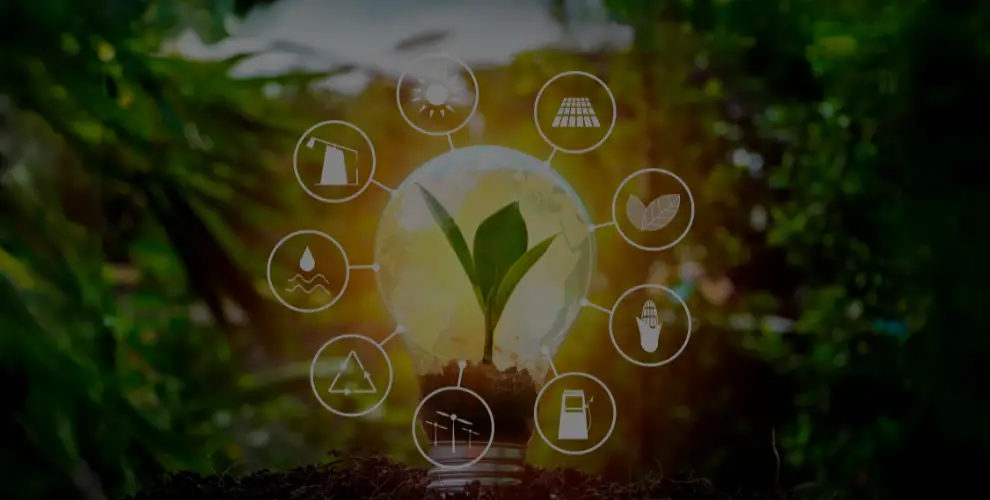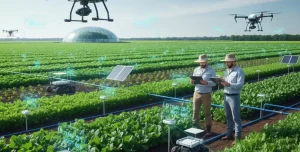
Don’t Get Left Behind: The Urgent Need for Green IT
Table of Contents
Introduction
Welcome to WikiGlitz!
We have brought you this amazing blog about the urgent need for Green IT. In today’s fast-paced digital world, technology plays a vital role in every aspect of our lives.
However, as we increasingly rely on IT systems, the environmental impact of this growth has become a pressing concern.
Green IT, or sustainable information technology, has emerged as a solution to minimize this negative impact by promoting energy-efficient and environmentally friendly IT practices.
In this blog, we’ll discuss Green technology in IT, the benefits of Green IT, and how businesses can adopt sustainable IT solutions.
We’ll also explore how Green IT is essential for reducing carbon emissions and contributing to global sustainability efforts.
Key Takeaways
- Green IT is a crucial strategy for reducing the tech industry’s environmental footprint and lowering energy consumption.
- Adopting eco-friendly IT practices and sustainable technology trends is key to staying competitive in a world that increasingly prioritizes sustainability.
- The urgency for companies to implement Green IT solutions has never been greater, as these efforts contribute directly to reducing carbon emissions.
What is Green IT?
Green IT refers to the practice of using computing resources in an environmentally friendly way.
It involves designing, manufacturing, using, and disposing of IT systems with minimal environmental impact.
The aim is to reduce energy consumption, minimize waste, and promote sustainability within the technology sector.
Green technology in IT covers a wide range of initiatives, including energy-efficient hardware, software optimization, and improved data center efficiency.
At its core, Green IT is about finding innovative ways to reduce the carbon footprint of technology while maintaining or enhancing business performance.
It’s an important step toward creating a more sustainable future, where technology and the environment can coexist without harm.
Why is Green IT important?
As the global demand for technology grows, so does the energy required to support IT infrastructure.
Data centers, hardware, and network systems consume vast amounts of electricity, contributing significantly to carbon emissions.
This makes Green IT more important than ever. By implementing Green computing strategies, organizations can not only reduce their environmental impact but also decrease operational costs by adopting more efficient technologies.
Moreover, Green IT plays a crucial role in corporate social responsibility (CSR).
Consumers and stakeholders are increasingly expecting businesses to take action on sustainability, and IT departments are no exception.
Companies that fail to adopt sustainable IT solutions risk falling behind in a marketplace that prioritizes green initiatives.
How can IT become more sustainable?
IT can become more sustainable by focusing on several key areas.
Sustainable IT solutions include optimizing the efficiency of hardware and software, adopting energy-efficient IT systems, and transitioning to cloud-based services that reduce physical infrastructure.
Another major area of improvement is the adoption of Green data centers, which are designed to be more energy-efficient by using advanced cooling technologies and optimizing server workloads to minimize waste.
Businesses can also implement eco-friendly IT practices such as reducing e-waste through recycling and using devices that have longer life cycles.
Additionally, virtualization and cloud computing allow companies to run fewer physical servers, further lowering energy consumption and carbon emissions.
What are the benefits of Green IT?
The benefits of Green IT go beyond just environmental advantages. Here are some key benefits:
- Cost savings: By implementing energy-efficient IT systems, companies can significantly reduce their energy bills. Lower power consumption also means fewer cooling requirements, further lowering operational costs, especially in large data centers.
- Reduced carbon footprint: Adopting Green technology in IT helps organizations minimize their environmental impact. Lower emissions and energy use contribute to broader sustainability goals, which is increasingly important in today’s world.
- Enhanced brand reputation: Companies that prioritize sustainable IT solutions often gain favor with customers, partners, and investors who are increasingly focused on environmental responsibility.
- Regulatory compliance: Many countries are introducing regulations that encourage or require businesses to adopt eco-friendly IT practices. Staying ahead of these regulations can help companies avoid penalties and position themselves as leaders in sustainability.
These benefits not only help businesses financially but also align them with global efforts to reduce environmental damage and create more sustainable economic models.
How can companies implement Green IT solutions?
Implementing Green IT solutions requires a strategic approach that focuses on sustainability across all aspects of the IT ecosystem.
Here are some effective ways companies can adopt Green IT:
- Virtualization: Companies can consolidate servers and reduce the number of physical machines in use. Virtualization allows multiple applications to run on fewer servers, cutting down energy consumption.
- Renewable energy: Powering data centers with renewable energy sources, such as wind or solar, is an impactful way to reduce reliance on fossil fuels.
- Energy-efficient hardware: Investing in energy-efficient devices that use less power while performing the same functions can reduce overall consumption. Laptops, servers, and other hardware with energy-efficient systems can provide long-term savings.
- Conduct regular energy audits: Audits help identify areas where energy usage can be reduced. By pinpointing inefficient systems, businesses can make data-driven decisions to optimize their energy consumption.
By implementing these strategies, businesses can develop a comprehensive plan for Green computing and reduce their environmental footprint while driving innovation and cost savings.
How does Green IT reduce environmental impact?
Green IT reduces environmental impact in several ways. First, it lowers energy consumption by promoting the use of energy-efficient IT systems and optimizing how technology is used.
By reducing the number of physical servers and implementing Green data centers, companies can significantly decrease the power required to run their operations.
Additionally, Green IT reduces e-waste. Many IT devices have short life cycles, contributing to growing piles of discarded electronics.
Eco-friendly IT practices, such as recycling old equipment and purchasing devices with longer life spans, help mitigate this problem.
Moreover, transitioning to sustainable technology means fewer harmful materials are used in the manufacturing of devices.
Green IT promotes the use of materials that are less damaging to the environment, further reducing the overall ecological impact of technology use.
How does IT fit into the concept of sustainable development?
IT plays a significant role in sustainable development by driving innovations that help reduce resource consumption and improve efficiency.
For instance, the integration of smart technologies, powered by IT, enables industries to monitor and manage energy usage more effectively, optimizing resource allocation.
In addition to improving efficiency, IT sustainability initiatives contribute to reducing the overall carbon footprint of businesses.
Cloud computing, for example, enables companies to store data without needing to maintain energy-intensive physical servers.
Furthermore, Green data centers equipped with advanced cooling systems and renewable energy sources are key to creating a more sustainable digital infrastructure.
Through the development of sustainable technology, IT also aids other sectors, such as transportation and manufacturing, in becoming more environmentally friendly.
By adopting Green IT, businesses can support sustainable practices in every facet of their operations.
How can IT help reduce carbon emissions?
Green IT practices play a crucial role in helping companies reduce carbon emissions, primarily through energy-efficient systems and optimized resource usage.
Here are some ways IT helps lower carbon emissions:
- Energy-efficient hardware: Investing in energy-efficient IT systems that consume less electricity reduces the overall carbon emissions generated by a company’s infrastructure.
- Cloud computing: Shifting to cloud-based services reduces the need for physical data centers, which consume large amounts of energy. By utilizing shared resources in the cloud, businesses can decrease the environmental footprint associated with on-premise servers.
- Data center optimization: Implementing Green data centers, which use energy-efficient cooling methods and renewable energy sources, can significantly reduce carbon emissions compared to traditional data centers.
- Automation and monitoring tools: IT also enables businesses to monitor and manage energy consumption more effectively through automation, ensuring systems are only using the necessary power when needed.
By integrating Green IT solutions, companies can directly reduce their carbon emissions and contribute to broader sustainability efforts.
What are examples of Green IT initiatives?
Many leading companies have embraced Green IT initiatives to reduce their environmental impact. Some examples include:
- Google’s data centers: Google has invested heavily in Green data centers that run on renewable energy and use efficient cooling technologies, significantly reducing their carbon footprint.
- Microsoft’s AI for Earth: This initiative focuses on using AI and data analytics to support environmental sustainability efforts, promoting greener IT practices and contributing to global sustainability goals.
- Apple’s recycling programs: Apple has introduced recycling programs aimed at reducing e-waste by encouraging users to return old devices for responsible recycling and reuse.
These Green IT initiatives showcase how technology giants are leading the way in implementing sustainable technology trends to minimize their environmental impact and drive global change.
Conclusion
Welcome to the conclusion of this amazing blog brought to you by WikiGlitz. The urgency to adopt Green IT is undeniable as the world moves toward more sustainable practices across industries.
Companies that embrace eco-friendly IT practices will not only contribute to reducing carbon emissions but will also benefit from cost savings, enhanced brand reputation, and future-proof strategies in a world that increasingly values sustainability.
By investing in sustainable IT solutions like Green data centers, energy-efficient hardware, and renewable energy sources, businesses can make a meaningful impact on their carbon footprint while staying competitive.
he shift toward Green technology in IT is no longer an option—it’s an essential part of corporate responsibility.
Follow WikiGlitz for more insights into how technology can align with sustainability and help you stay ahead in this fast-evolving landscape.
FAQs
What are the most effective Green IT practices for businesses?
The most effective Green IT practices include investing in energy-efficient hardware, virtualizing resources to reduce the number of physical servers, and transitioning to renewable energy sources for powering IT infrastructure.
How can small businesses adopt Green IT on a limited budget?
Small businesses can start by implementing cost-effective eco-friendly IT practices, such as using cloud-based services to minimize physical infrastructure and conducting regular energy audits to identify areas where energy usage can be reduced.
What are the future trends in Green IT and sustainable technology?
Future trends in Green IT include the development of smarter, more energy-efficient Green data centers, increased adoption of AI for environmental monitoring, and widespread use of renewable energy in powering IT systems.
How does Green IT contribute to reducing energy costs?
Green IT helps reduce energy costs by using energy-efficient IT systems that consume less power and adopting optimized cooling technologies in data centers, which cuts down on the need for energy-intensive air conditioning.
Are there any government policies promoting Green IT adoption?
Many governments are introducing policies that promote the adoption of Green IT, such as offering tax incentives for companies that invest in sustainable technology and setting carbon reduction targets for industries with high energy consumption.
Want to keep up with our blog?
Our most valuable tips right inside your inbox, once per month.
Error: Contact form not found.
WikiGlitz Team
Welcome to WikiGlitz, your ultimate destination for tech insights and innovation. Our expert team is dedicated to delivering free resources and professional advice on various technology topics, including Artificial Intelligence, Cyber Security, Cloud Computing, and more. We strive to empower our readers with up-to-date information and practical guidance, ensuring you stay ahead in the rapidly evolving tech landscape. At WikiGlitz, we are passionate about making complex technology accessible to everyone. Our team of seasoned experts curates content that is both informative and engaging, helping you understand and leverage the latest tech trends. Whether you're a tech enthusiast or a professional, WikiGlitz is your go-to source for reliable, expert-driven content. Join us on this journey to explore and embrace the future of technology.





